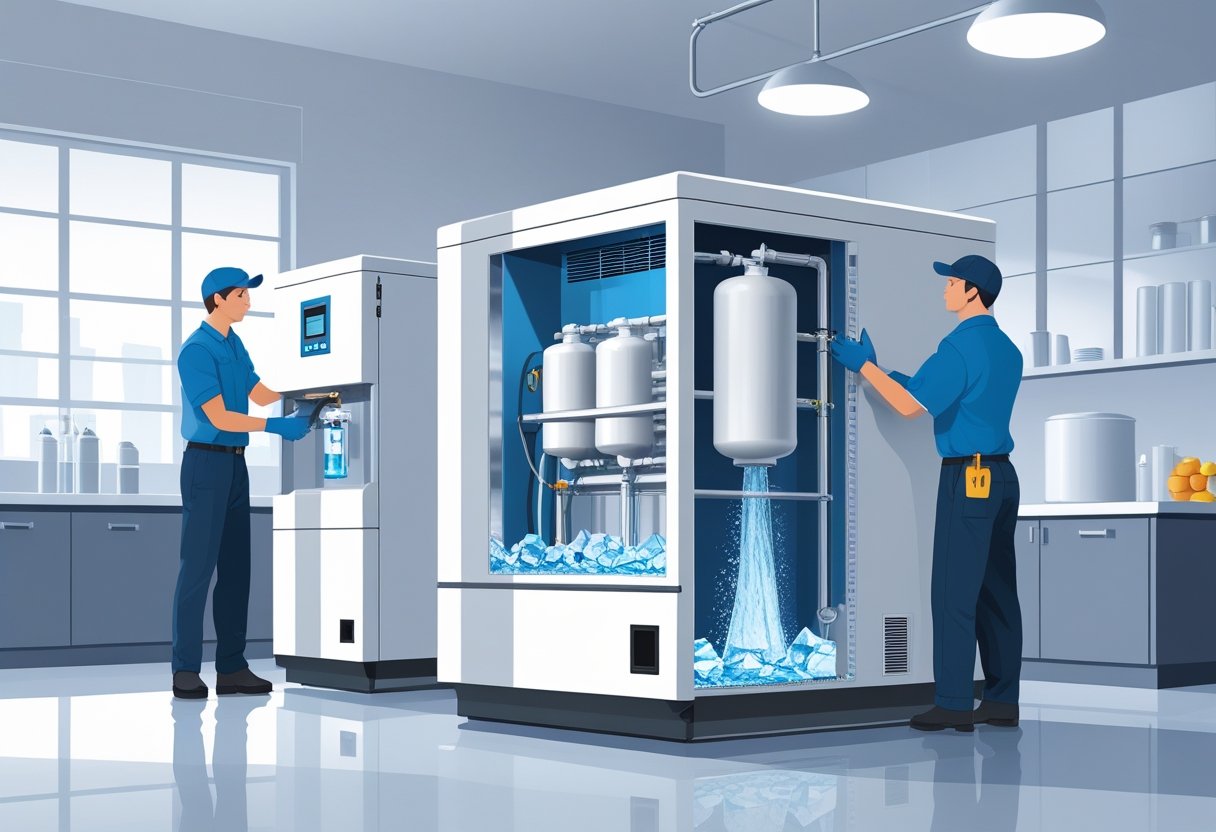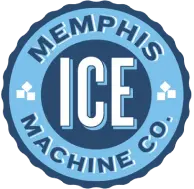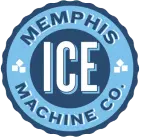proudly serving
the mid-south
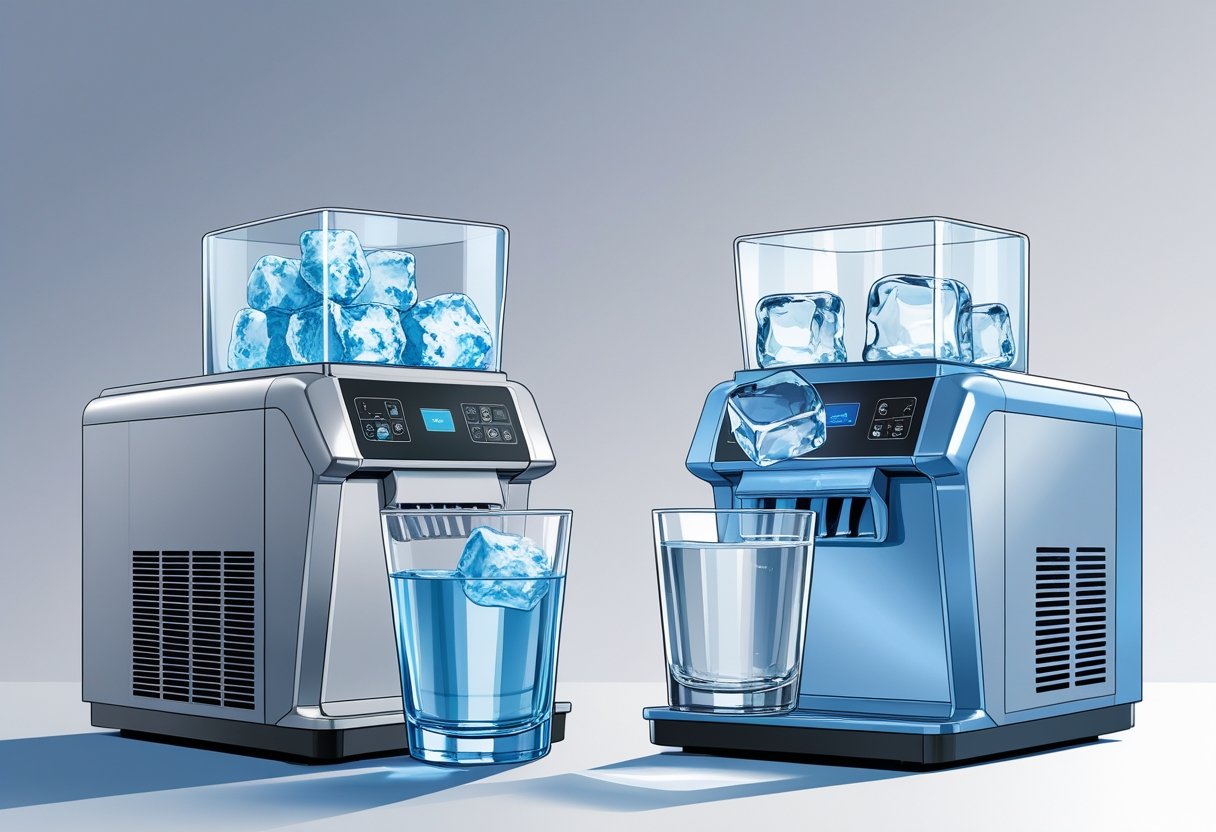
Nugget vs Cube Ice Machines Comparison for Optimal Commercial Use
Choosing between nugget and cube ice machines can directly impact how your business serves customers and manages daily operations. Nugget ice is soft, chewable, and ideal for beverages where texture matters, while cube ice is larger, harder, and cools drinks faster, making it perfect for cocktails or sodas. Knowing which style fits your needs can save you time and money.
At Memphis Ice, we’ve supported Mid-South businesses with ice machine solutions since 1977, helping you find the right equipment to keep your operation running smoothly. Whether you prioritize drink quality or quick cooling, understanding these key differences ensures you invest in the most effective commercial ice machine for your setting.
With options for rental, sales, and maintenance, Memphis Ice is ready to help you plan ahead and avoid downtime. Keep reading to discover how nugget and cube ice machines compare so you can make an informed choice that matches your business demands.
Key Differences Between Nugget and Cube Ice Machines
Choosing the right ice machine depends on how the ice is made and what type of ice you need for your business. Nugget and cube ice machines differ in their production process, the shape of ice produced, and how that ice performs in various settings.
How Nugget Ice Machines Work
Nugget ice machines create small, soft pellets by compressing flaked ice. This process involves scraping thin sheets of ice off a refrigerated surface, then breaking them into chewable nuggets. The ice is slightly moist and typically has a higher water content than traditional cubes.
Because of this moisture, nugget ice absorbs flavors well and cools drinks without watering them down quickly. Nugget machines often require more energy and maintenance due to the texture and moisture level of the ice. They are common in medical facilities and beverage services where chewable ice is preferred.
How Cube Ice Machines Work
Cube ice machines freeze water into hard, clear cubes by freezing water in molds or trays within a refrigerated compartment. Ice cubes typically have lower water content and are frozen solid, making them dense and slow to melt.
The freezing process for cube ice is generally more energy efficient than for nugget ice. Cube ice machines require less frequent maintenance and are favored in food service environments where slower melting ice is needed to chill beverages or display food. The cubes provide longer-lasting cooling but are less chewable.
Physical Characteristics of Nugget vs Cube Ice
| Feature | Nugget Ice | Cube Ice |
|---|---|---|
| Shape | Small, irregular soft pellets | Uniform, solid square or rectangular cubes |
| Texture | Chewable, porous, moist | Hard and dense |
| Water Content | 15-25% higher moisture | Lower moisture, solid freeze |
| Melting Rate | Melts faster, cools quickly | Melts slower, retains cold longer |
| Best Use Cases | Drinks needing chewable ice, medical | Beverage cooling, display, food prep |
When you partner with Memphis Ice, you get access to both types of machines tailored for your needs. Whether you want the soft texture of nugget ice or the durability of cube ice for your commercial operation, you can count on expert guidance and support.
Explore more about the differences in nugget and cube ice machines at Ice Maker Spot.
Types and Applications of Nugget and Cube Ice
Understanding the distinct qualities of nugget and cube ice helps you choose the right type for your business needs. Each has advantages depending on use, environment, and customer preferences.
Best Uses for Nugget Ice
Nugget ice is soft, chewable, and absorbs flavors well. It’s often called “Sonic ice” because it’s popular at Sonic Drive-Ins. Bars and restaurants favor nugget ice since it chills drinks quickly while being easy to chew, enhancing the drinking experience.
It works well in healthcare settings too, as patients find it easier to consume compared to harder ice. Nugget ice machines also require less power and space, making them a practical choice for kitchens with limited room.
For businesses prioritizing customer satisfaction, nugget ice is a smart option. It is ideal for sodas, cocktails, smoothies, and any cold beverage where texture matters. Memphis Ice supports regional businesses by offering nugget ice machines built for consistent, quality ice.
Best Uses for Cube Ice
Cube ice is traditional, clear, and comes in various sizes like full or half cubes. Its solid structure melts slower than nugget ice, making it excellent for water pitchers, ice chests, or cocktails where dilution should be minimal.
This type of ice is widely used in bars for classic drinks or mixed beverages that require longer-lasting chill. In kitchens, cube ice is preferred for display and food preservation, particularly in seafood and produce presentations.
If your priority is volume cooling and versatility across foodservice and hospitality, cube ice machines offer robust performance. They suit environments where slow melt and high clarity matter most to customers.
Alternative Names: Sonic Ice and More
Nugget ice is frequently called “Sonic ice,” a name stemming from its widespread use at Sonic restaurants. This nickname has become common in the beverage and hospitality industry, signaling the soft, chewable ice style you might already know.
Cube ice may also be referred to as bullet or crescent ice, depending on the machine type. These variations basically fall under the cube category with minor shape differences affecting melt rate and surface area.
Knowing these alternate names helps you communicate clearly when ordering or servicing commercial ice machines. At Memphis Ice, our team ensures you get the exact ice type tailored to your bar, kitchen, or healthcare facility needs.
Performance Factors to Consider
When choosing between nugget and cube ice machines, you should weigh how well each type handles production, melting, and environment fit. These factors affect your kitchen or bar operation’s efficiency and the quality of ice served to customers.
Capacity and Ice Production Speed
Cube ice machines generally produce larger, solid ice pieces and tend to have a faster production rate. If you need high volumes of ice quickly, especially in a busy commercial kitchen or bar, cube machines often deliver more pounds of ice per day.
Nugget ice machines produce smaller, chewable pieces and usually have a slightly slower output. However, nugget machines provide plenty of ice for slower-paced environments or places where texture matters more than sheer volume.
Consider your daily ice requirements and peak demand. For example, Memphis Ice can help you select a machine that matches your specific volume needs without overspending on capacity.
| Ice Type | Typical Production Speed | Best Use Case |
|---|---|---|
| Cube | High (up to 1000+ lbs/day) | High-traffic bars, restaurants |
| Nugget | Moderate (500–800 lbs/day) | Healthcare, casual dining |
Melting Rate and Texture
Cube ice melts slower due to its dense, solid shape, which helps keep drinks colder longer. This makes cube ice a good choice where dilution is a concern, such as in cocktails served at bars or beverages in a restaurant setting.
Nugget ice, made of compressed ice flakes, melts faster because of its porous structure. Its chewable, soft texture is preferred for soda fountains and medical uses, where its melt rate enhances mouthfeel without quickly watering down drinks.
Understanding these differences helps you control drink quality and customer satisfaction depending on your business—whether it’s a busy kitchen or bar.
Suitability for Home and Commercial Environments
Nugget ice machines are often compact and quieter, making them popular in home kitchens or small-scale bar setups. They deliver convenience and ice with a specific texture appealing for casual use.
Cube ice machines, especially large commercial units, are built for high-volume settings like restaurant kitchens, bars, and full-service beverage stations. Their output and durability meet the rigorous demands of commercial service.
Your choice impacts installation space, noise levels, and maintenance needs. Memphis Ice offers tailored advice and commercial ice machine rental options to fit various environments across the Mid-South region.
Buying Considerations for Nugget vs Cube Ice Machines
Choosing between nugget and cube ice machines means weighing what fits best for your kitchen needs and budget. Key factors to consider include upfront and long-term costs, how simple the machine is to maintain, and energy usage. Understanding these aspects helps you make a smart investment that supports your business smoothly.
Price Differences and Value
Nugget ice machines typically have a higher initial purchase price than cube ice makers. This is due to the complexity of producing soft, chewable ice nuggets versus the straightforward cubic shape.
However, nugget machines can offer better value for businesses looking for a unique ice experience that customers often prefer, especially in beverage services. Cube ice machines are usually less expensive upfront and are favored for versatility in food storage and slower dilution in drinks.
When buying, consider not only the machine cost but also installation and any needed accessories. Memphis Ice can help you assess the total cost of ownership for either option to avoid surprises.
Ease of Maintenance and Cleaning
Cube ice machines often have simpler internal designs, making them easier to clean and maintain on your own. Their components generally require less frequent servicing, which can reduce downtime in busy kitchens.
Nugget ice machines have more moving parts due to the crushing process needed to create the nuggets. This can mean more regular maintenance and cleaning to prevent clogs or mechanical wear.
You’ll want to evaluate your staff’s capacity for upkeep or choose a service plan. Memphis Ice offers comprehensive maintenance designed to keep your ice maker running efficiently year-round.
Energy Efficiency
Cube ice makers generally consume less energy because their process is more direct and requires less mechanical effort compared to nugget ice machines.
Nugget machines, while using more energy, create ice that cools drinks faster and can reduce the volume of ice needed per serving. This might partially offset their higher power usage in some operations.
Look for ENERGY STAR-rated models when buying to maximize energy savings. Your choice should balance operational costs with performance needs to optimize your kitchen’s overall efficiency.
For detailed comparisons, explore options on how different ice shapes affect ice machine costs and performance.
Choosing the Right Ice Machine for Your Needs
Selecting the right ice machine depends heavily on how and where you plan to use it. The size, type of ice, and machine capacity should fit your daily demands without overspending or underperforming. Understanding these factors early simplifies your decision and ensures smooth operation.
Home Use: Kitchen and Entertaining
For your kitchen or home bar, consider nugget ice machines. Nugget ice is soft, chewable, and perfect for casual drinking and entertaining guests. It cools beverages evenly without watering them down quickly, making it ideal for cocktails or soda.
Cube ice machines produce harder, slower-melting ice that’s better if you prefer iced drinks that stay cold longer. If space is a concern, compact nugget or cube ice machines designed for home use can fit easily on countertops.
When buying for home use, prioritize ease of cleaning, noise level, and ice production speed. Memphis Ice offers options suitable for residential setups, combining reliability with efficient ice production.
Commercial Use: Bars and Restaurants
Bars and restaurants demand continuous, high-volume ice production. Nugget ice is popular in fast food and casual dining for its chewability and customer appeal. It fills cups quickly and blends well in mixed drinks.
Cube ice machines deliver hard, large cubes that chill drinks fast and last longer, minimizing dilution — a key benefit during busy cocktail service. Your choice may depend on your menu and drink offerings.
Consider machine size, production capacity, and maintenance needs. Commercial units should integrate easily into your bar system or kitchen workspace. Regular service by a trusted provider like Memphis Ice ensures your machine handles peak volume without interruption.
How to Decide Based on Use Case
Start by defining your primary ice needs: volume, ice texture, and cooling speed. If your priority is customer experience and chewable ice, nugget machines excel. For sturdier ice that cools quickly and is less prone to dilution, cube machines suit you better.
Match machine capacity to daily peak demand — undersizing leads to shortages, while oversizing wastes energy and space. Also, factor in installation location, access for maintenance, and water quality.
If you operate a bar or restaurant in the Mid-South, trusting local experts for guidance and service can simplify your choice and upkeep. Memphis Ice knows the regional climate demands and offers tailored solutions backed by decades of experience.
For more detail on the differences in ice types and machines, see Nugget vs. Bullet vs. Cube Ice.
Frequently Asked Questions
Understanding the practical differences between nugget and cube ice machines helps you make informed choices about your equipment. Factors like ice texture, energy use, size, and maintenance all come into play depending on your needs.
What are the advantages of using a nugget ice maker over a traditional cube ice maker?
Nugget ice offers a softer, chewable texture that many customers prefer for beverages. It absorbs flavors better and chills drinks quickly without diluting them as fast as cube ice.
Additionally, nugget ice machines typically produce smaller pieces that pack tightly, making them ideal for smoothies, healthcare, and retail applications where chewable ice adds value.
Can you highlight the differences in energy consumption between nugget and cube ice machines?
Nugget ice machines generally use more energy due to their more complex design and ice production process. Cube ice makers tend to be more energy efficient because they use simpler freezing techniques.
If energy costs are a priority, a cube ice machine may offer savings, but the trade-off includes texture and customer preference.
What factors should be considered when choosing between an undercounter nugget and a cube ice maker?
Space availability is critical—undercounter nugget machines are often larger and more intricate. Cube ice makers usually fit compactly under counters with less complexity.
Consider the type of ice your business needs: soft, chewable ice favors nugget machines, while clear, long-lasting cubes serve well for general beverage cooling.
How does the ice production capacity vary between small nugget and half cube ice makers?
Small nugget ice machines often produce less volume per hour compared to half cube ice makers of similar size. However, nugget ice is denser, which can affect how much ice you need operationally.
If you require high volumes of chewable ice, investing in a larger nugget machine or multiple units might be necessary.
Why might a crescent ice maker be less preferable than nugget or cube ice machines for some users?
Crescent ice offers a traditional shape but lacks the chewability of nugget ice and the clarity and longevity of cube ice. Some users find crescent ice less versatile for beverages and food service applications.
This limitation makes nugget and cube ice machines more popular choices across various industries.
In terms of maintenance and longevity, how do nugget ice machines compare to cube ice makers?
Nugget ice machines tend to require more frequent maintenance and have a more complex design, which can add to service costs over time. Cube ice machines usually last longer with less intensive upkeep.
Choosing a trusted provider like Memphis Ice can help ensure your equipment is properly maintained to maximize lifespan and reliability.
Recent News
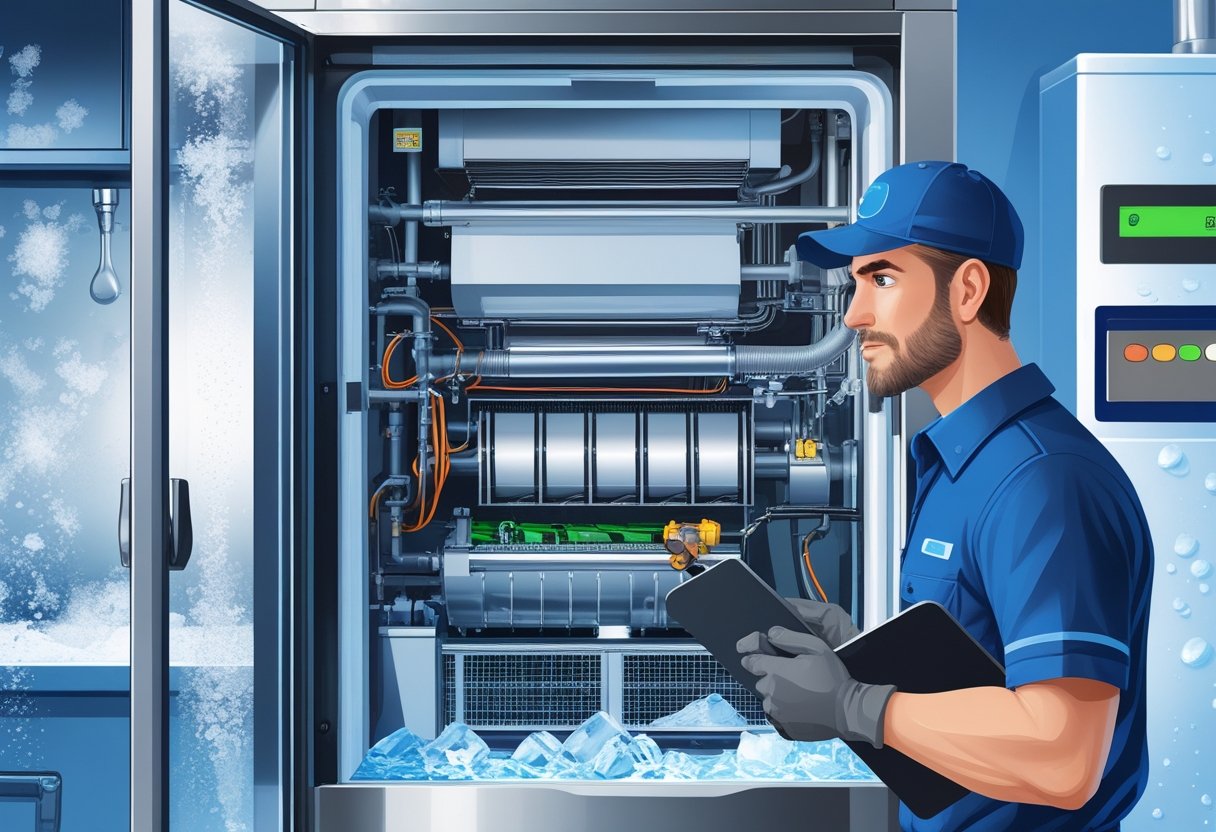
Why Is My Ice Machine Slow Causes and Quick Fixes to Improve Ice Production
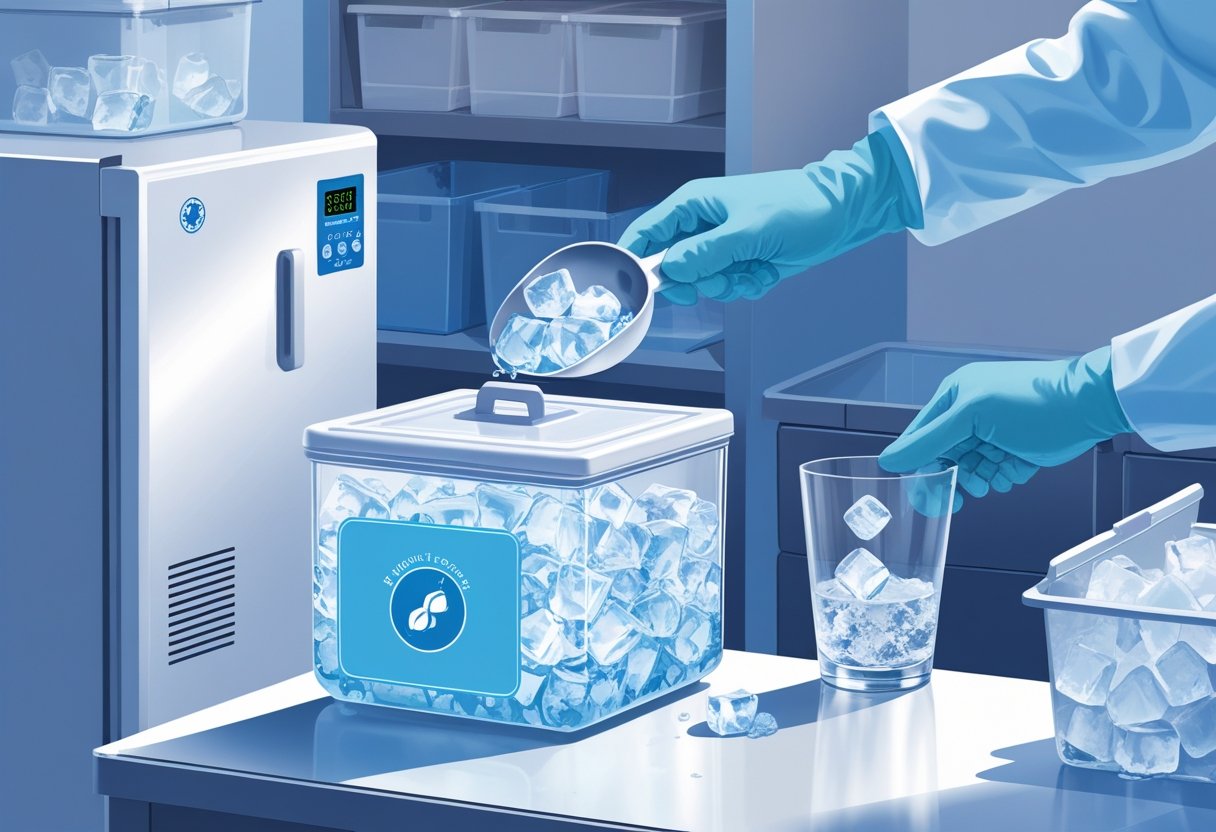
Best Practices for Storing Ice to Maintain Purity and Extend Shelf Life
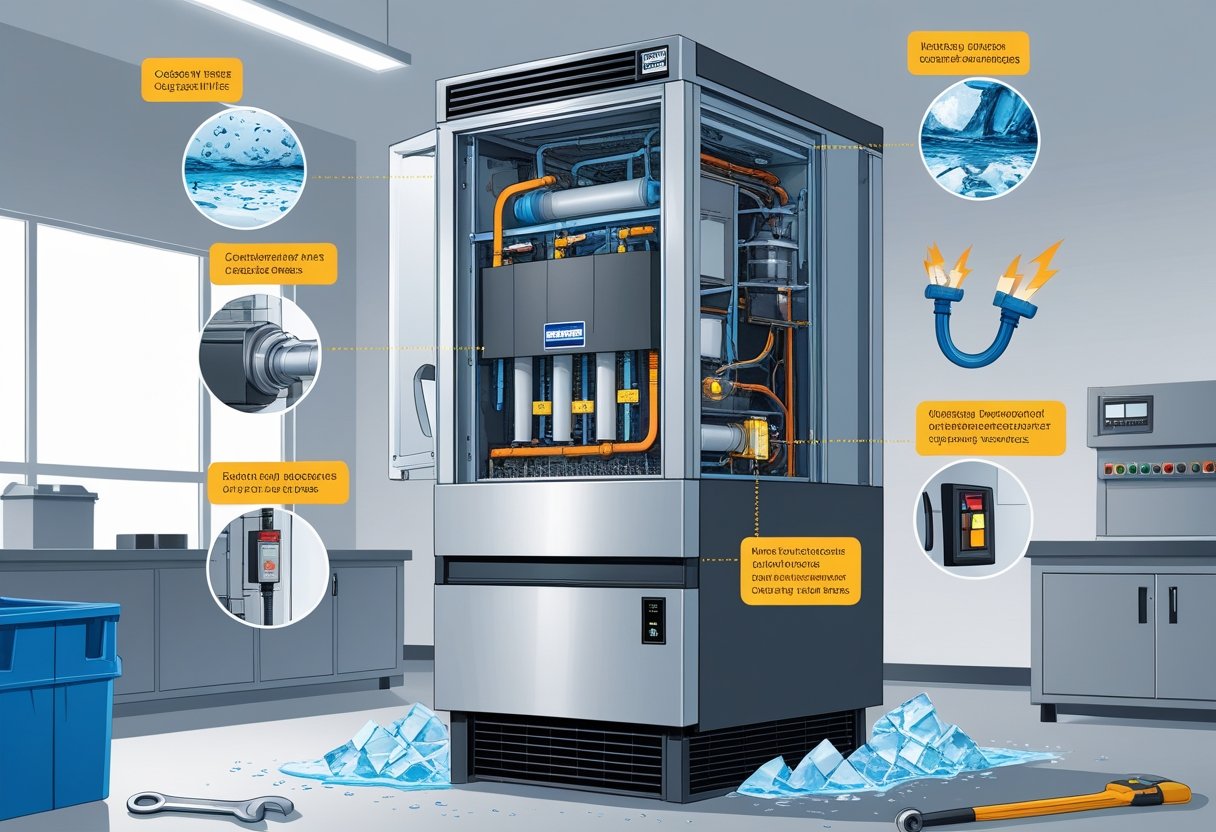
Top Reasons Ice Machines Fail and How to Prevent Costly Breakdowns

Common Ice Machine Rental Questions Answered for Event and Business Needs
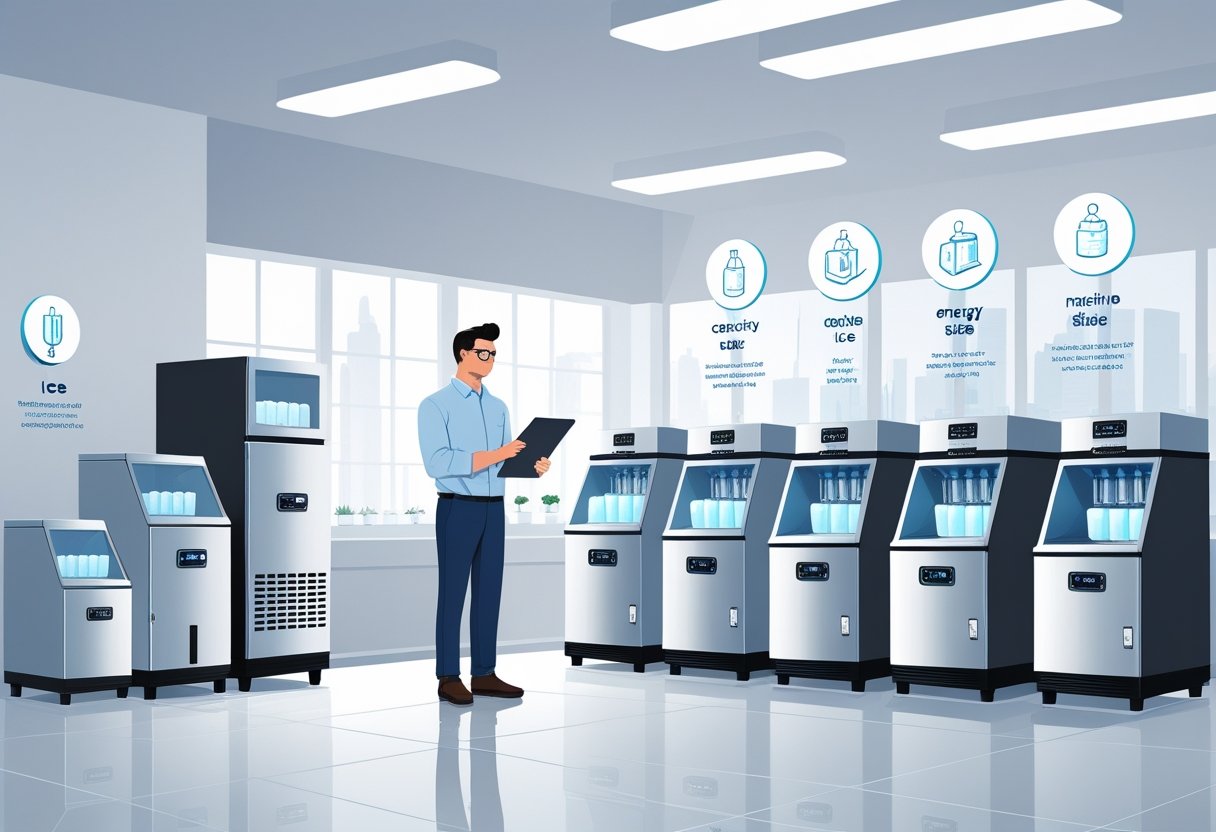
How to Choose a Commercial Ice Machine for Optimal Efficiency and Reliability
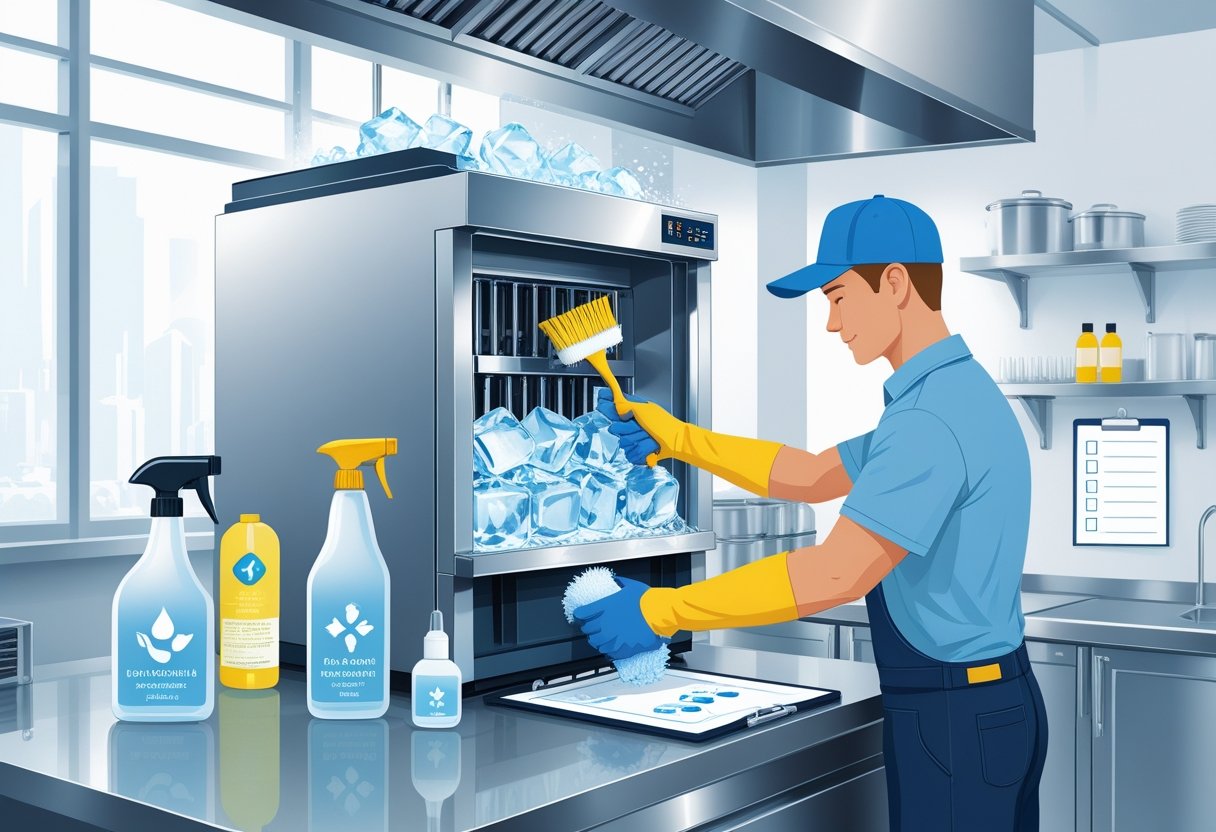
Importance of Routine Ice Machine Cleaning for Health and Efficiency Maintenance
